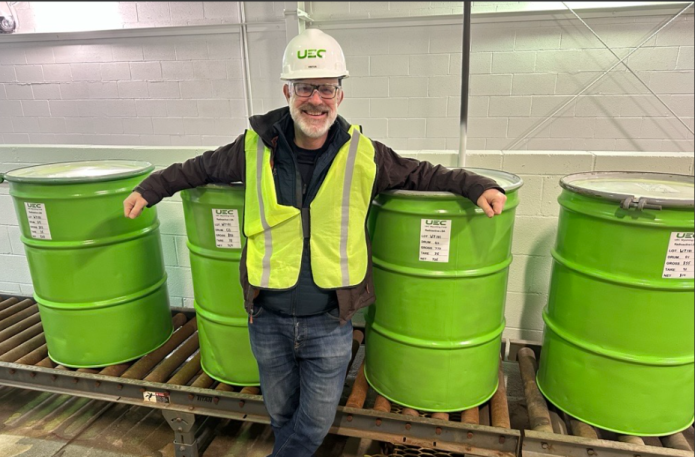
First drums of uranium ‘yellowcake’ from the restarted Christensen Ranch project area
In the vast empty plains of Wyoming, a state renowned for its rugged landscapes and abundant natural resources, Uranium Energy Corporation (UEC) is emerging as a key player in the US uranium production industry. My recent visit to this uranium producer provided an in-depth look at their recently restarted operations, which are a rare source of domestic US uranium production at a time where nuclear power is undergoing a renaissance. It also showcases a commitment to environmental responsibility and low impact production methods.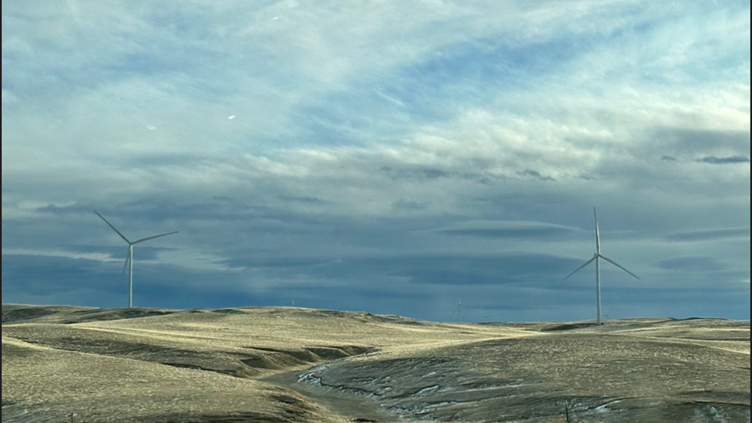
Source: Janus Henderson
Wyoming, the least populous state in the US and famed for its cattle ranching, boasts a rich history of energy fuel production, from oil to coal and uranium. Flying into Casper, a town of 50,000 and driving several hours north to UEC’s property, Christensen Ranch, I witnessed firsthand the blend of old and new – historic and now run-down towns from previous boom times juxtaposed with modern wind turbines dotting the horizon, standing as testament to the region’s evolving energy narrative.
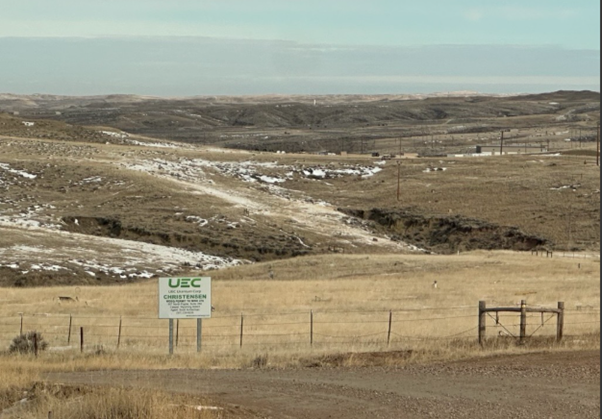
Source: Janus Henderson
Innovative and sustainable mining
UEC has strategically acquired a significant land position in Wyoming, comprising both previously producing and prospective sites. The company employs a hub-and-spoke model, where multiple uranium fields are tied into a centralised processing hub. This efficient setup underscores their commitment to sustainable and responsible resource extraction.
The chosen method of production, In-situ Recovery (ISR) mining, is particularly noteworthy for its minimal environmental impact. It involves drilling 400-foot wells and using carbonated water to dissolve uranium from sandy deposits, allowing UEC to minimise surface disruption and contamination risks. This process results in a product known as yellowcake (U3O8), a vital component for low-carbon baseload power generation and the broader energy transition.
Navigating growth with expertise and strategic expansion plans
During the site visit, it was clear that UEC is on a robust operational and strategic trajectory. The team, led by industry veterans, brings a wealth of experience in ISR mining. Their expertise is evident in the meticulous safety and environmental protocols that govern the site, ensuring no contamination of water supplies and strict control over radiation exposure.
While a challenge during the visit, UEC has hired numerous geologists with prior uranium experience since that time. Attracting skilled geologists, poses ongoing difficulties, which has been overcome with competitive benefits packages and flexible work schedules. Yet, UEC’s plans for expansion, including higher-grade uranium production and developments in Texas at Burke Hollow and Hobson central processing plant are well underway, signalling a proactive approach to overcoming these hurdles.
Currently, UEC produces uranium from units 7, 8, and 10, with plans to develop higher-grade unit 11 through 2025 and future expansions to unit 8, 10 and 12. Facilities like the Christensen Ranch (CR) gathering facility and the Irigaray central processing facility are in good condition, though some refurbishments are needed and there is scope for future expansion in production with very modest levels of investment.
Wyoming’s supportive regulatory environment benefits UEC. The company’s local sourcing of drilling services and consumables in a geopolitically stable, safe jurisdiction provides strategic advantages. Discussions are ongoing about securing long-term contracts to stabilise prices and margins, though current plans involve selling material on the spot market.
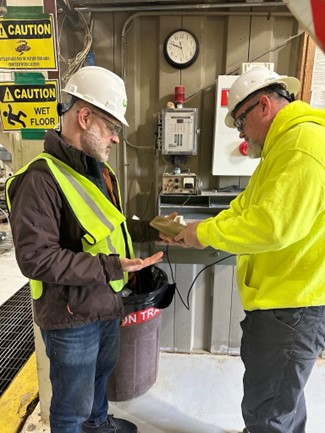
Screening for radiation
Source: Janus Henderson
Environment and community
UEC is committed to environmental safety, implementing stringent controls to ensure no contamination of water supplies. Their well field designs minimise water excursion risks, and no pollution incidents have affected neighbouring wells. Gamma exposure is controlled using water and lead shields, with strong safety protocols clearly evident in all operations. Remediation efforts include injecting clean water into aquifers to reduce uranium concentration, ultimately restoring sites completely. Community engagement is another focus, with UEC sponsoring local events like rodeos to foster local relationships.
Nuclear renaissance
UEC stands to benefit from the Trump Administration’s executive orders to quadruple US nuclear capacity and rebuild the domestic uranium fuel cycle. These orders invoke the Defense Production Act and designate the US nuclear fuel cycle as critical to national security. The US Department of energy has a target to triple nuclear energy capacity by 2050 which involves adding 200GW of new nuclear power through a combination of new reactor construction, restarts of existing facilities and upgrades to current plants. This would require increasing annual U.S. uranium requirements from 47 million pounds to approximately 190 million pounds per year.
We have also seen big tech turning to nuclear to power the energy hungry data centres that artificial intelligence requires which alongside the recent federal initiatives to expand the US nuclear capacity have injected optimism into the uranium market. UEC finds itself in the right place at the right time and is well-positioned to capitalise on these policy shifts, aiming to contribute significantly to the domestic uranium fuel cycle.
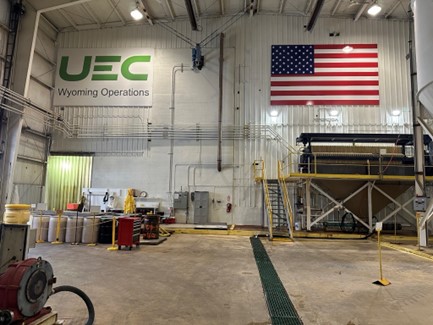
Source: Janus Henderson
An old metal in a new paradigm
As the world transitions to cleaner energy sources, UEC’s operations in Wyoming exemplify how traditional energy sectors can adapt and thrive in a new paradigm. With its focus on sustainable production and strategic growth, UEC is not just producing uranium but is also enabling the future of energy in the US.
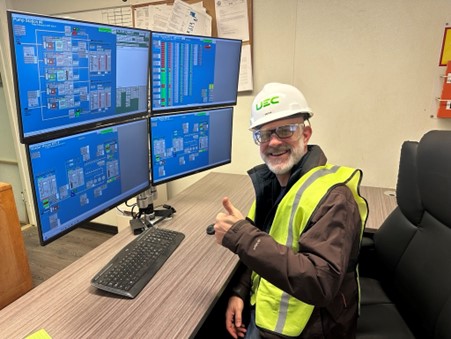
Monitoring well field pumps and header houses
Source: Janus Henderson
NIMBYism: “Not in My Backyard”, a term used to describe opposition from residents to developments they perceive as undesirable in their local area.
These are the views of the author at the time of publication and may differ from the views of other individuals/teams at Janus Henderson Investors. References made to individual securities do not constitute a recommendation to buy, sell or hold any security, investment strategy or market sector, and should not be assumed to be profitable. Janus Henderson Investors, its affiliated advisor, or its employees, may have a position in the securities mentioned.
Past performance does not predict future returns. The value of an investment and the income from it can fall as well as rise and you may not get back the amount originally invested.
The information in this article does not qualify as an investment recommendation.
There is no guarantee that past trends will continue, or forecasts will be realised.
Marketing Communication.
Important information
Please read the following important information regarding funds related to this article.
- Shares/Units can lose value rapidly, and typically involve higher risks than bonds or money market instruments. The value of your investment may fall as a result.
- Shares of small and mid-size companies can be more volatile than shares of larger companies, and at times it may be difficult to value or to sell shares at desired times and prices, increasing the risk of losses.
- The Fund is focused towards particular industries or investment themes and may be heavily impacted by factors such as changes in government regulation, increased price competition, technological advancements and other adverse events.
- The Fund follows a responsible investment approach, which may cause it to be underweight in certain sectors (due to the avoidance criteria employed) and thus perform differently than funds that have a similar financial objective but which do not apply any avoidance criteria when selecting investments.
- The Fund may use derivatives with the aim of reducing risk or managing the portfolio more efficiently. However this introduces other risks, in particular, that a derivative counterparty may not meet its contractual obligations.
- If the Fund holds assets in currencies other than the base currency of the Fund, or you invest in a share/unit class of a different currency to the Fund (unless hedged, i.e. mitigated by taking an offsetting position in a related security), the value of your investment may be impacted by changes in exchange rates.
- Securities within the Fund could become hard to value or to sell at a desired time and price, especially in extreme market conditions when asset prices may be falling, increasing the risk of investment losses.
- The Fund may incur a higher level of transaction costs as a result of investing in less actively traded or less developed markets compared to a fund that invests in more active/developed markets.
- The Fund could lose money if a counterparty with which the Fund trades becomes unwilling or unable to meet its obligations, or as a result of failure or delay in operational processes or the failure of a third party provider.